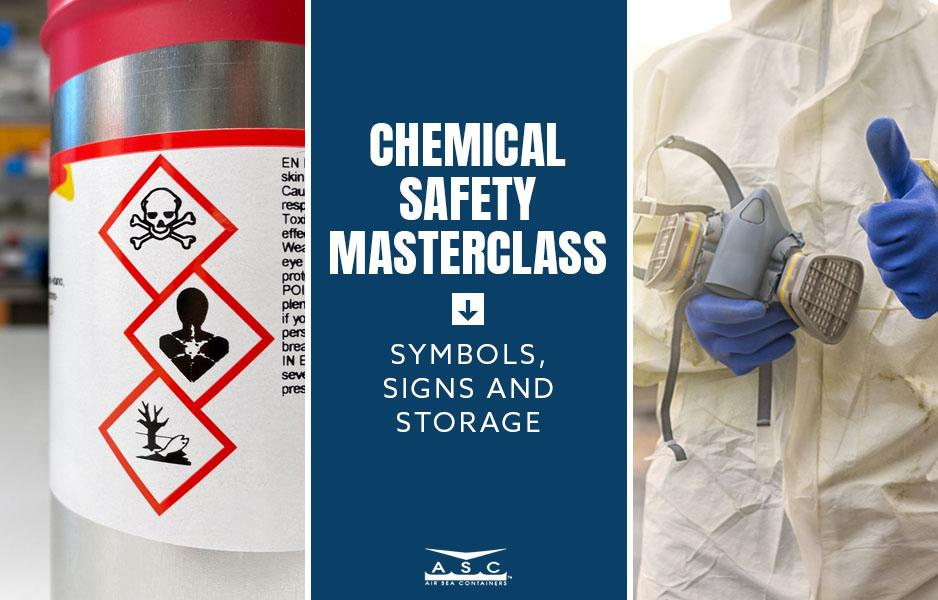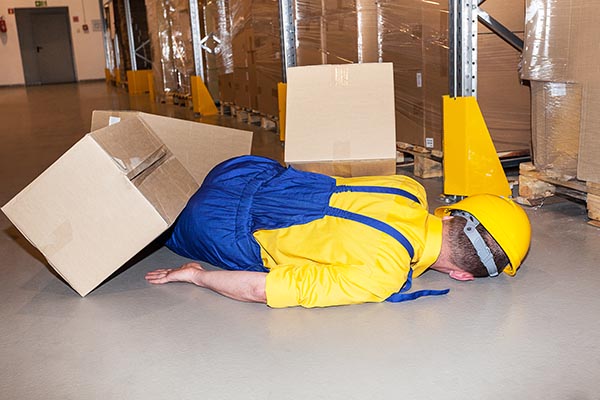
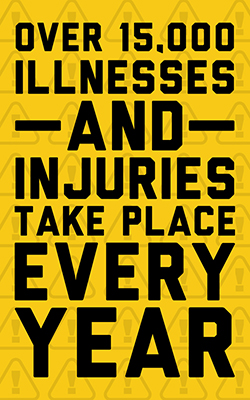 Working in a warehouse can be a very rewarding job. You get a lot of physical exercise from lifting heavy objects all day, you bond closely with a group of workers that you see every day, and you play a very important role in ensuring that companies and individuals get their important orders on time. With multiple paths toward career advancement and an increase in responsibility, it is a promising opportunity for workers who are looking for a low barrier of entry.
Working in a warehouse can be a very rewarding job. You get a lot of physical exercise from lifting heavy objects all day, you bond closely with a group of workers that you see every day, and you play a very important role in ensuring that companies and individuals get their important orders on time. With multiple paths toward career advancement and an increase in responsibility, it is a promising opportunity for workers who are looking for a low barrier of entry.However, one of the biggest problems when it comes to working in the warehouse is the issue of personal safety. With over 15,000 illnesses and injuries taking place every year, the warehousing industry still has a long way to go in the way of enforcing safety regulations and preventing accidents from happening in the workplace.
Warehouse safety is only possible when every single employee is involved and looking out for one another, no matter their position in the company. Here are 8 useful steps that any warehouse can take to ensure that safety remains a top priority:

Enforce Regular Safety Education Initiatives
Having a program in place for health and safety is not an option that you can put in place to boost your credibility. It is a mandatory requirement by the Occupational Health and Safety Administration that all businesses provide their workers with the necessary training and education to perform their work safely.
All new employees are required to go through this training before they start working, and all current employees must renew their education on an annual basis to ensure that they are up to speed with any changes in the rules or regulations.
Once employees have received the education necessary to perform their job, it is important to ensure that the rules are enforced. Safety training is not a one-time thing and must be continually practiced on a daily basis until it becomes part of the work culture. It would also be a good idea to have several copies of the safety manuals available for easy access at any location within the warehouse.

Optimize the Warehouse for Ergonomics
Many businesses seem to scoff at the word “ergonomics,” as if it is some kind of corporate buzzword that does not achieve anything meaningful or productive. This could not be any further from the truth when it comes to worker safety.
When it comes to handling and carrying heavy objects, ergonomics can serve a useful purpose in minimizing the amount of bending and straining. In doing so, workers can reduce the chance of experiencing some kind of back injury and stay in the workforce for far longer.
Even with ergonomic principles in place for handling objects, you can also apply them to the design of the workspace. For example, if the products to be transported are placed at sternum height, it makes it far easier for employees to remove them without having to bend over in an uncomfortable position or reach high for them. Even if someone happens to sustain an injury, ergonomic practices can ensure a faster recovery and help them return to work in a few weeks instead of a few months.
Finally, ergonomics should be practiced when it comes to the creation of equipment. Things such as forklifts should have proper seating in place that will allow the operator to work comfortably for long periods of time without having to worry about an injury due to excessive seating in an uncomfortable position.
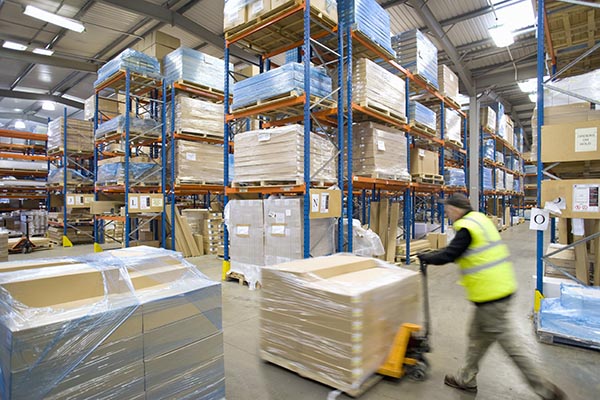

Keep the Working Environment Clean
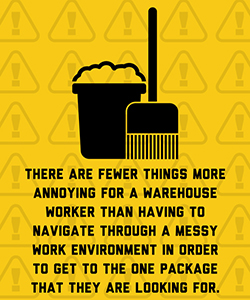 There are fewer things more annoying for a warehouse worker than having to navigate through a messy work environment in order to get to the one package that they are looking for. To be clear, a messy work environment can mean several things.
There are fewer things more annoying for a warehouse worker than having to navigate through a messy work environment in order to get to the one package that they are looking for. To be clear, a messy work environment can mean several things.It can mean that there are packaging materials and boxes scattered around the main working zone that should be put away or recycled.
It could mean that a worker left their space unattended, and it is not clear if they are finished with their work or forgot to put their items away. Wires and cords might be left tangled on the floor.
Although this can seem like a daily occurrence that is harmless in nature, a common workplace injury in warehouses includes some variation of falling, slipping, and tripping. When asked about the causes of these accidents, workers often chalk it up to a workplace obstruction that should not have existed in the first place.

Have Spill Control Measures Ready
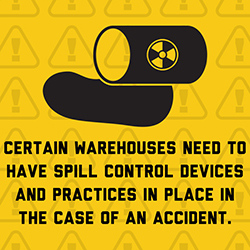 Some warehouses have the convenience of dealing with materials that are relatively harmless in nature. The only real threat that they pose is their heavy weight if they are not handled carefully by the worker in question.
Some warehouses have the convenience of dealing with materials that are relatively harmless in nature. The only real threat that they pose is their heavy weight if they are not handled carefully by the worker in question.Not every warehouse has this kind of luxury – some of them are responsible for the transport and shipping of liquids and chemicals that could prove to be dangerous if they spilled and released their toxic fumes to the nearby workers.
Certain warehouses need to have spill control devices and practices in place in the case of an accident. Although proper packaging and handling should be sufficient to prevent any kind of leak, it is advisable not to take any chances when it comes to worker safety.

Invest in Packaging Designed for Handling Hazardous Materials
If you are going to have the right packaging for your materials, you need to make sure that you are buying them from the correct source. A reliable supplier will have several years in the hazmat packaging industry, and have the track record and safety certifications to back up their promise.
Their products will come with extensive technical specifications and descriptions that will allow you to make the right choice for the products that you want to distribute. A smart one-time purchase will save your company a lot of money because you will not have to repurchase packaging that keeps degrading due to poor quality and build.


Impose Time Limits
One of the arguable downsides to working in the warehouse industry is that there are often long hours involved with time-based deliveries that cannot be done any other way. Sometimes there will be overtime that has to be paid and there is no way around it. However, given that warehouse jobs are physically demanding, consistently working overtime hours can pose some serious safety threats to the workers performing them.
It is well-accepted that concentration decreases and fatigue increases as one becomes more exhausted from doing physical work. This can lead to complacency and a lack of attention to detail that can prove fatal. It only takes one mistake from an unfocused mind for something serious to happen.
This is why it is important to set working limits on your workers and have plans in place to regularly rotate workers assigned to overtime shifts. Workers will know that they will not be asked to do anything unreasonable, and you can rest easy knowing that nobody will be experiencing any kind of fatigue or exhaustion that might compromise the safety of themselves and others.

Perform Regular Maintenance on All Mechanical Equipment
If workers are not getting injured due to improperly lifting heavy objects, there is a good chance that the equipment in your warehouse is responsible for a few injuries. It takes nothing more than something like a few unguarded pinch points on conveyor equipment to give rise to a slew of injuries. With any piece of equipment you use, there are numerous ways in which someone could hurt themselves by using it. The instructions that come with these machines are very clear on this matter.
Sometimes, a piece of equipment malfunctions and puts a worker’s safety at risk because it was not properly maintained over time. To circumvent this, all machinery needs to undergo the necessary examinations and maintenance every 6 months or so. Every piece of equipment should come with a checklist that specifies the items that need to be looked over carefully.

Maintain Safety Records
 One of the keys to improving safety in the workplace is to keep a regular log of all the accidents, injuries, and illnesses that take place. No matter how minor the event is, it needs to be properly logged. You should include details on what the nature of the incident was, how it happened, why it happened, and what can be done in the future to ensure that it will not happen again.
One of the keys to improving safety in the workplace is to keep a regular log of all the accidents, injuries, and illnesses that take place. No matter how minor the event is, it needs to be properly logged. You should include details on what the nature of the incident was, how it happened, why it happened, and what can be done in the future to ensure that it will not happen again.This record should also include safety training sessions and inspections done by third-party officials. The one problem with this strategy is that workers may feel compelled to hide their mistakes so that it does not reflect poorly on their record.
There are also cases where a worker sees someone violating a safety rule but will not report it out of fear of being found out and harassed for it. This will take a long time to do, but it is imperative that a culture of open trust and accountability is established in the warehouse. Workers should not feel intimidated or scared to report accidents and should be rewarded for being forthright in admitting what happened. Honesty is the key to identifying and fixing problems before they get worse.

In Conclusion
These 8 steps should cover the overwhelming majority of injuries and accidents that will take place in a typical warehouse. If there are any other safety tips that you feel were not properly addressed in this article, you will likely learn more about them through education and training (see tip #1: Enforce Regular Safety Education Initiatives).
You may not be perfect in implementing these rules for the very first time, but, as time goes by and you stick to them, you will find that they become second nature due to daily practice. You can always recover an extra day if you failed to do something due to a high level of concern for your safety, but it will be difficult to recover from a serious injury that could have been prevented in the first place.





